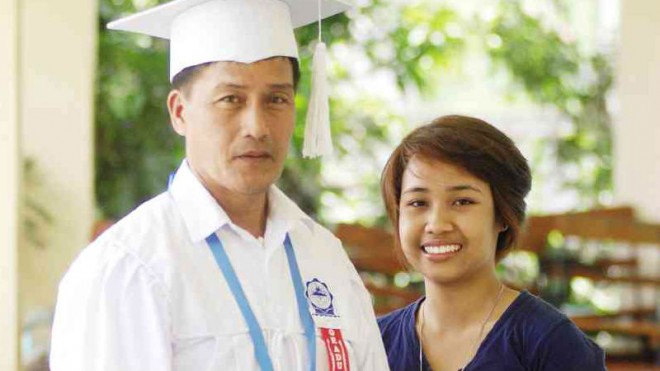‘Joel Puto,’ 47, finishes high school
Joel M. Pielago would often be told, “Bulaan ka! (You are a liar),” each time he pays the discounted student’s fare in public utility vehicles.
The good-natured Pielago would never protest, and would simply show his student ID from Lucena City’s Quezon National High School (QNHS), the Philippines’ second largest secondary school.
He knew it was hard for people to believe that a 47-year-old like him was still in high school. He himself did not think he would ever go back to school after sending his three children through college.
Last March 27, Pielago joined the more than 1,900 members of the 2015 QNHS graduating class, with the added distinction of being named “model student” of Section Hope of the Open High School (OHS).
Model student
Article continues after this advertisementWhile Pielago modestly attributes the honor to his being the oldest in the OHS program, his adviser, Amalia V. Castillo, said he earned the distinction “for his exemplary moral character and positive values visible in his personal qualities such as leadership ability, responsibility in doing tasks in school and willingness to extend help to his teachers and classmates … .”
Article continues after this advertisementPielago, who supported his family by selling puto, kutsinta and pichi-pichi, for which he earned the nickname “Joel Puto,” is grateful that QNHS was among the schools chosen to pilot-test the OHS program.
Launched by former Education Secretary Jesli A. Lapus in 2006, the OHS is “an alternative mode of delivering secondary education” that allows “independent, self-pacing and flexible study” for learners who have not started or completed secondary education for various reasons.
Learner-directed
The OHS instruction is “flexible, multichanneled and essentially learner-directed.” It is designed for people who have difficulty attending regular classes because of work, disability and other reasons.
Pielago appreciates the OHS program as it has helped working people like him to earn a high school diploma at a more manageable pace and with less pressure. The OHS class meets only once a week. Students do most of the class work at home using modules.
“It was not hard to do the work,” he said in Filipino, the distinctive accent of the Quezon Tagalog flavoring his speech.
